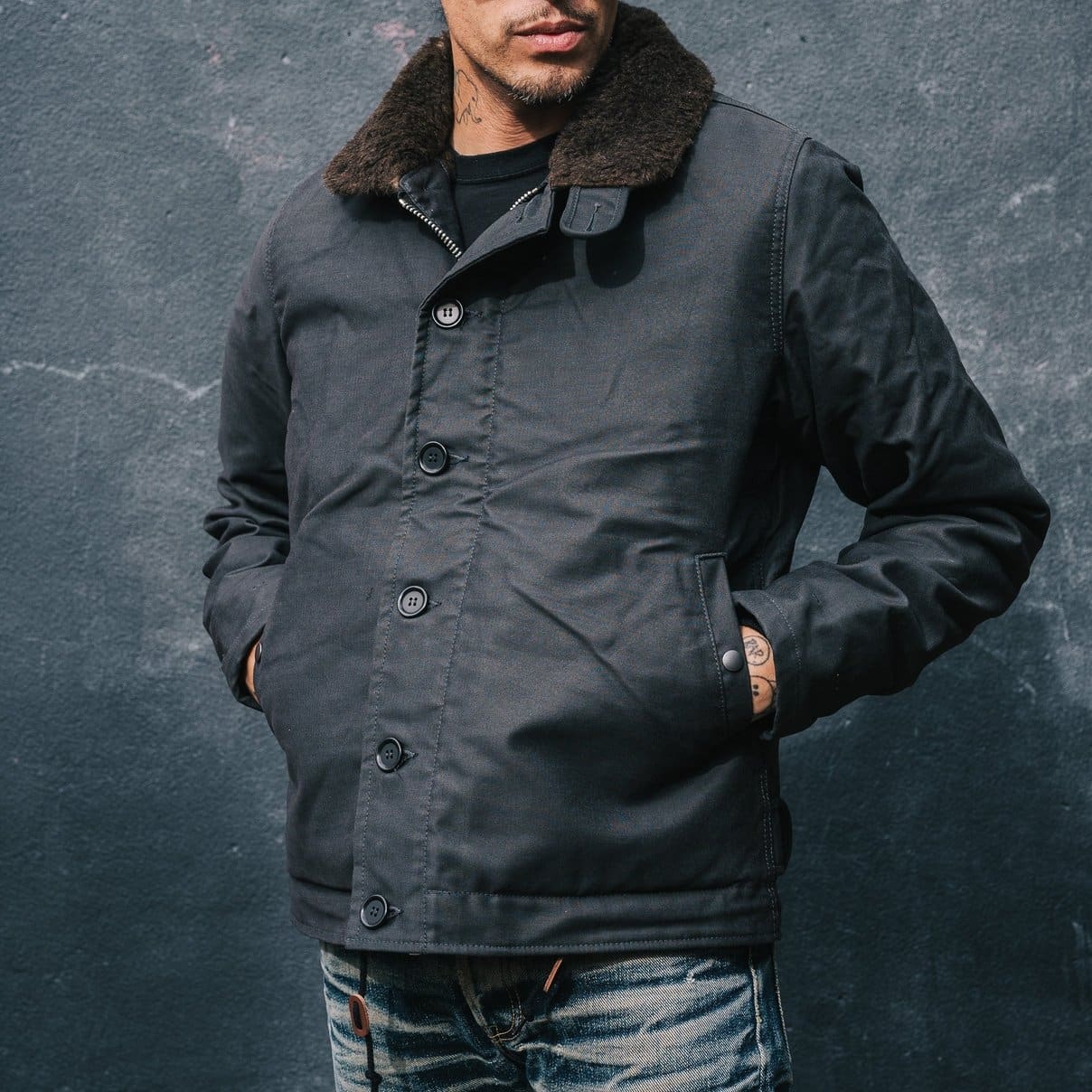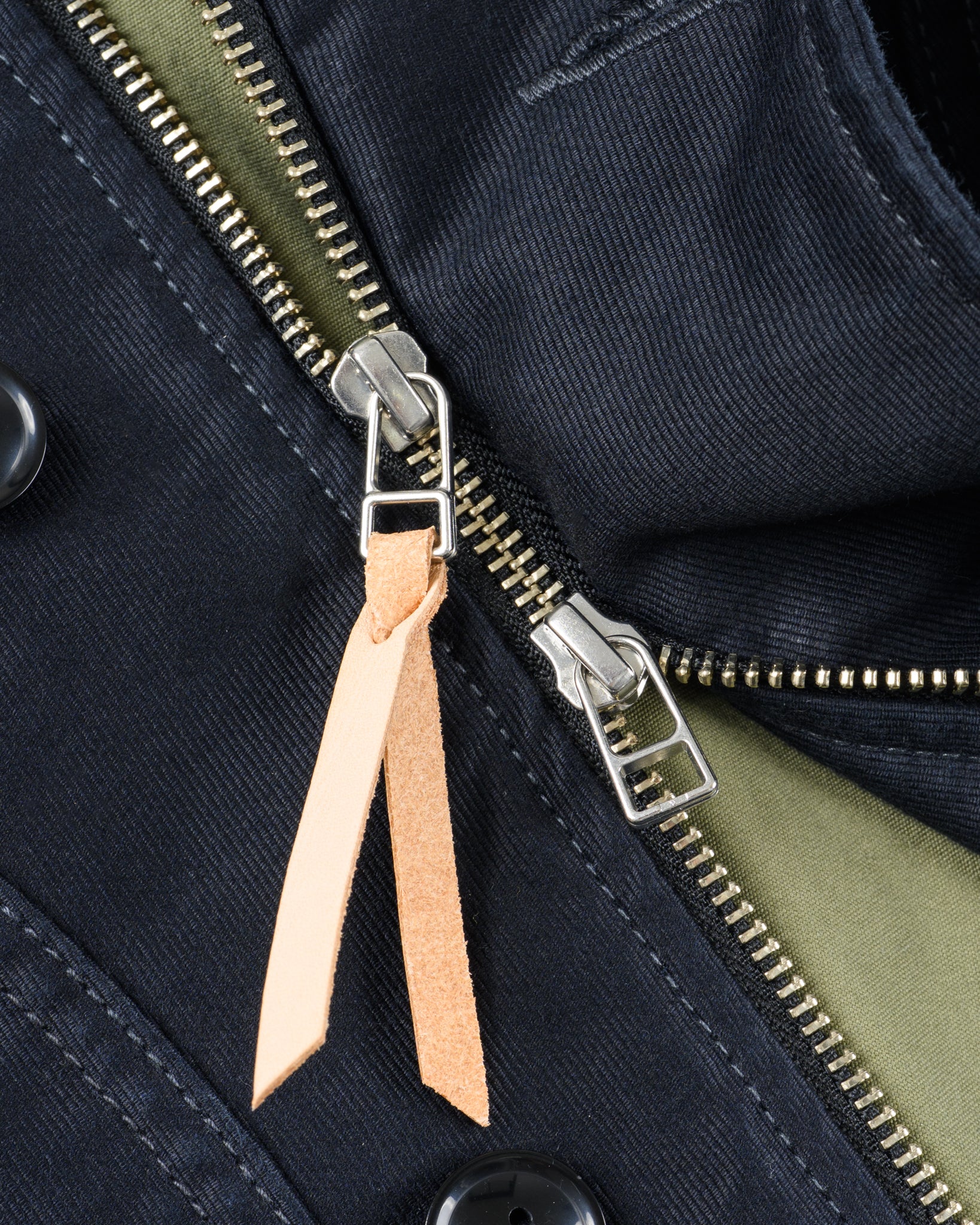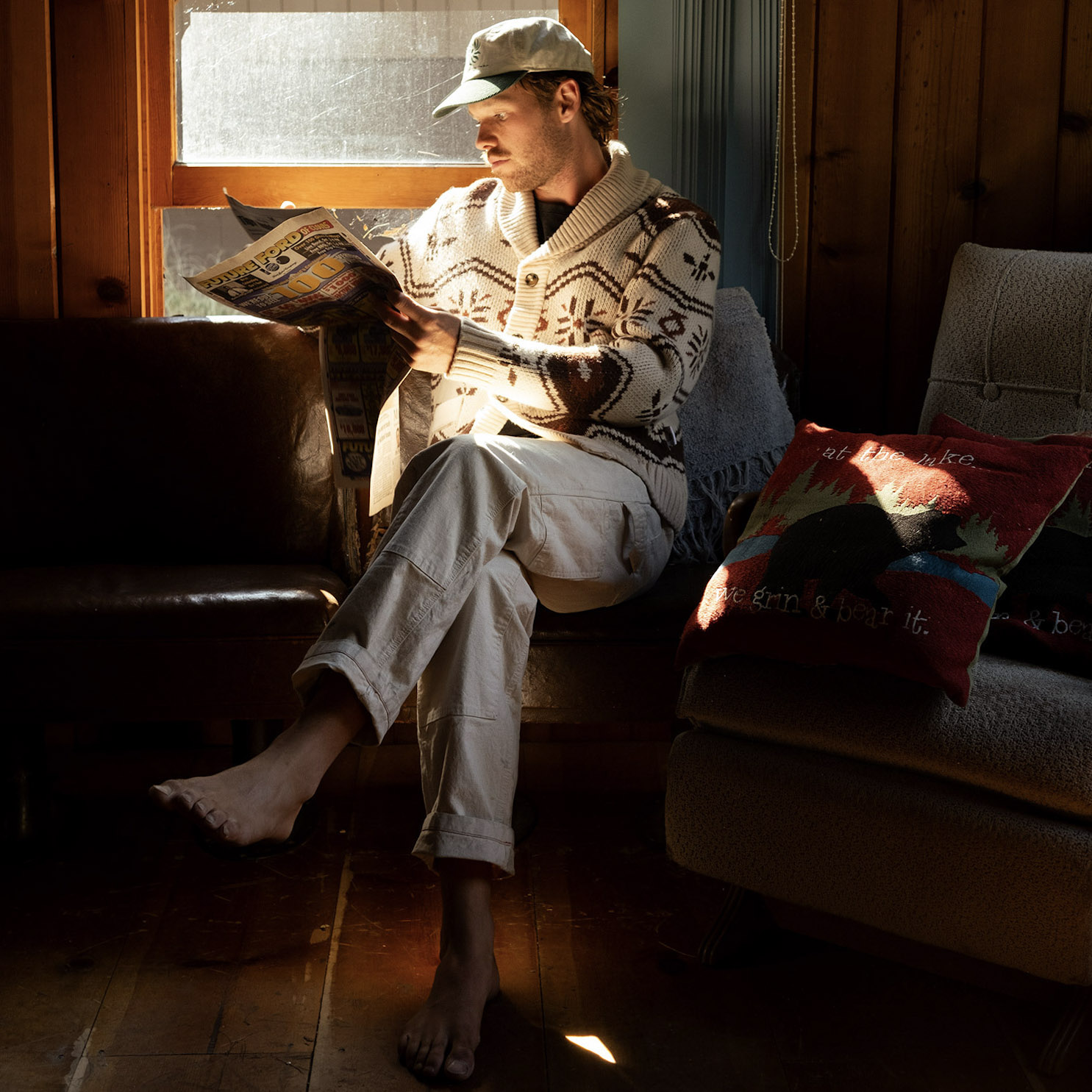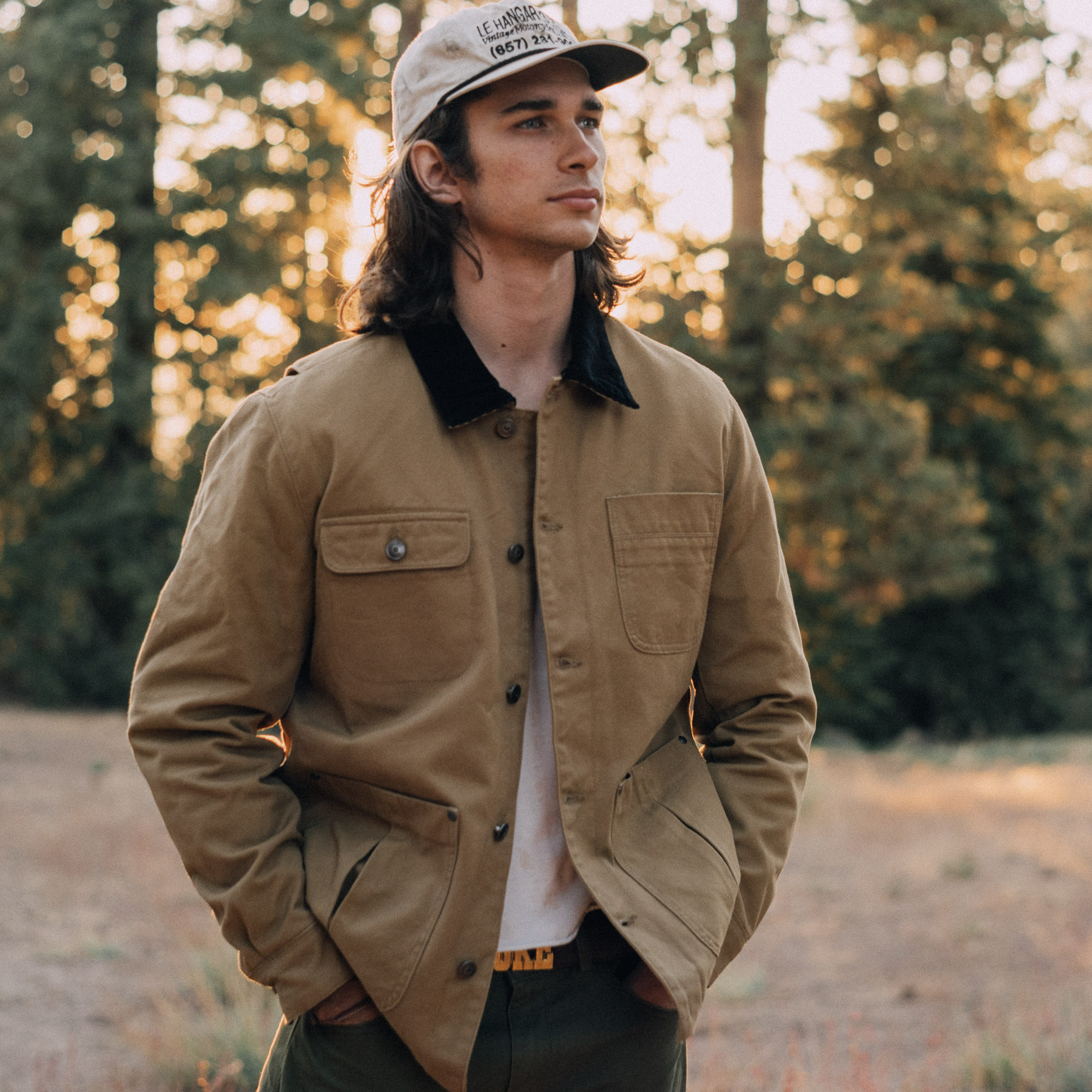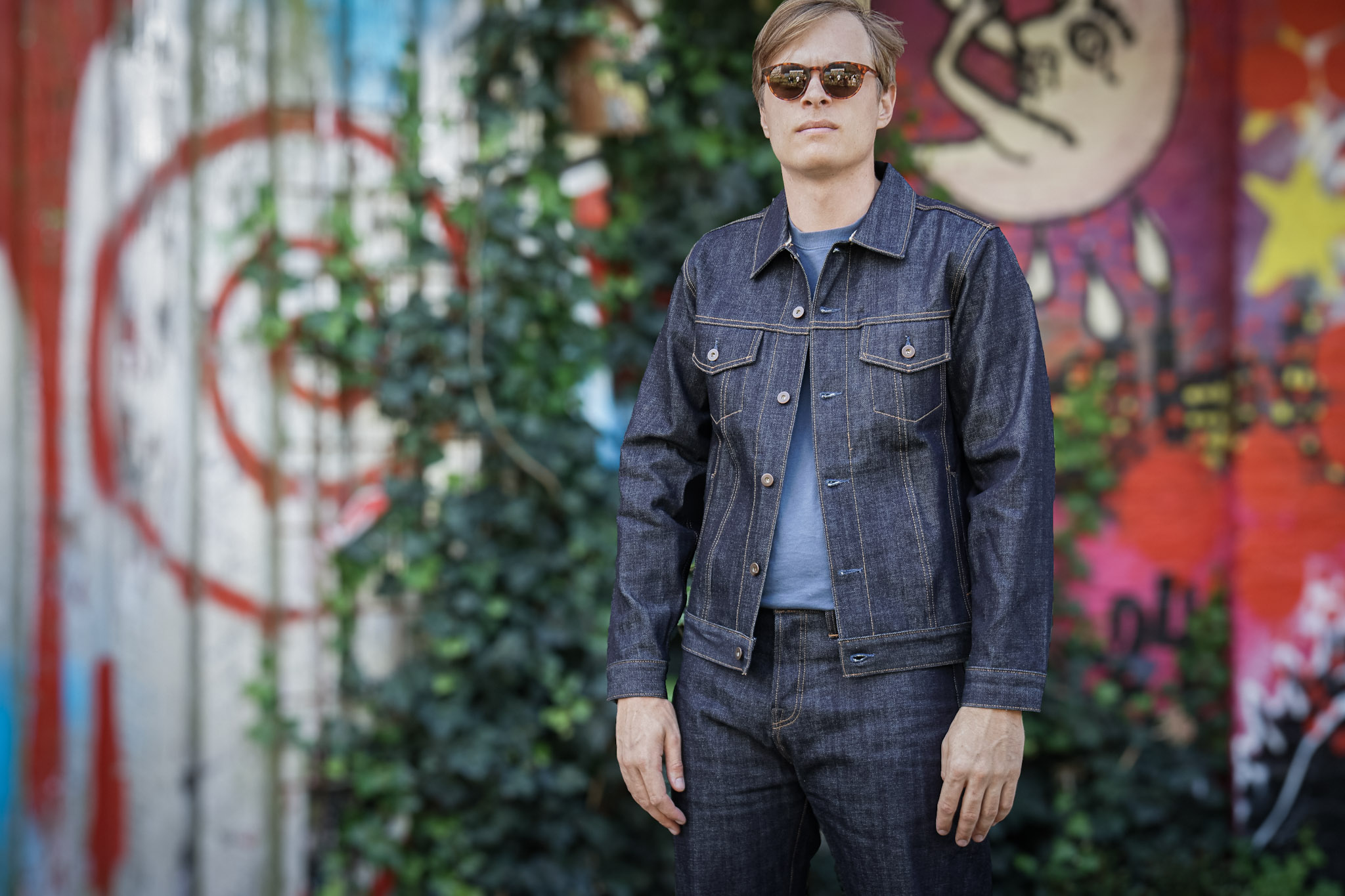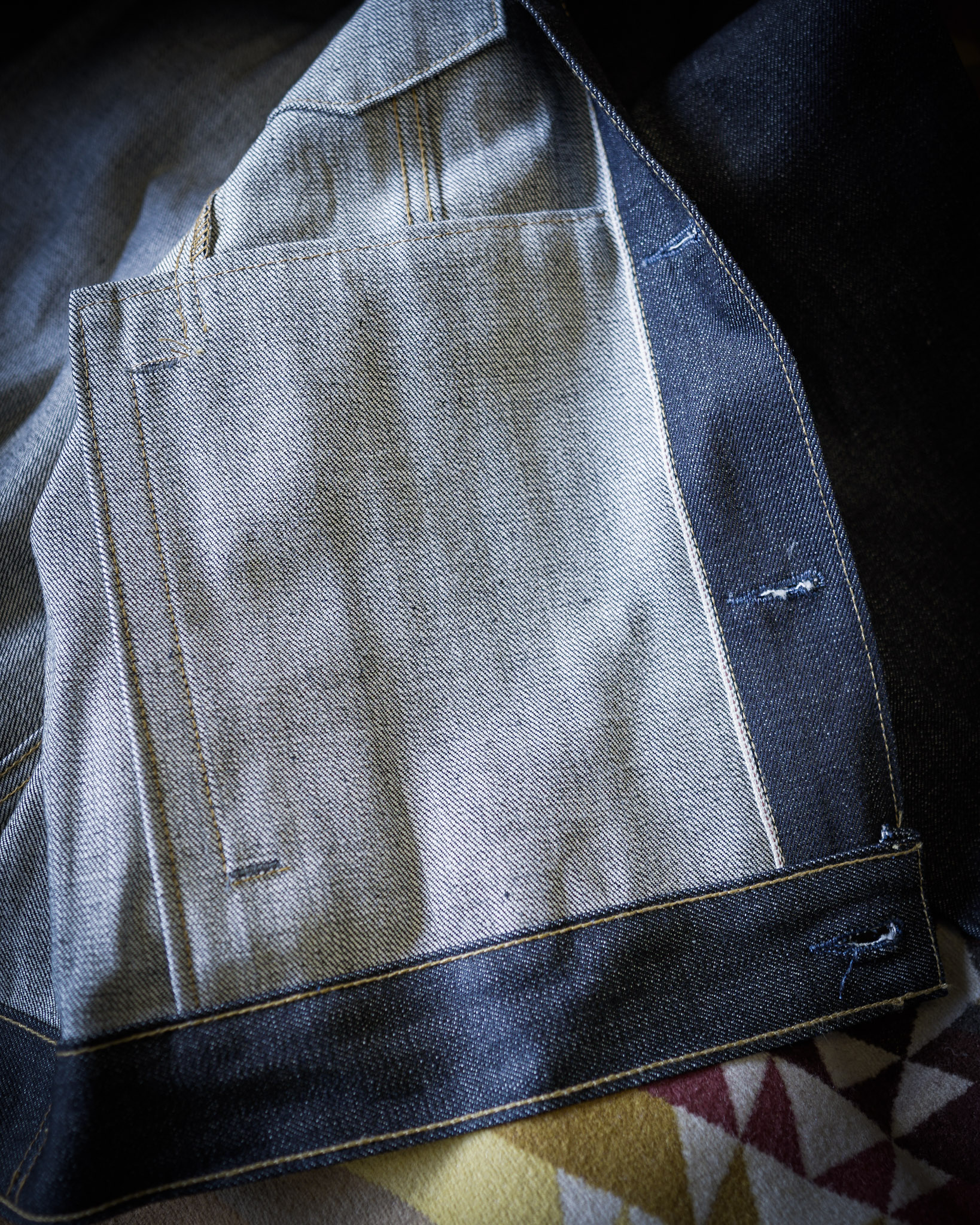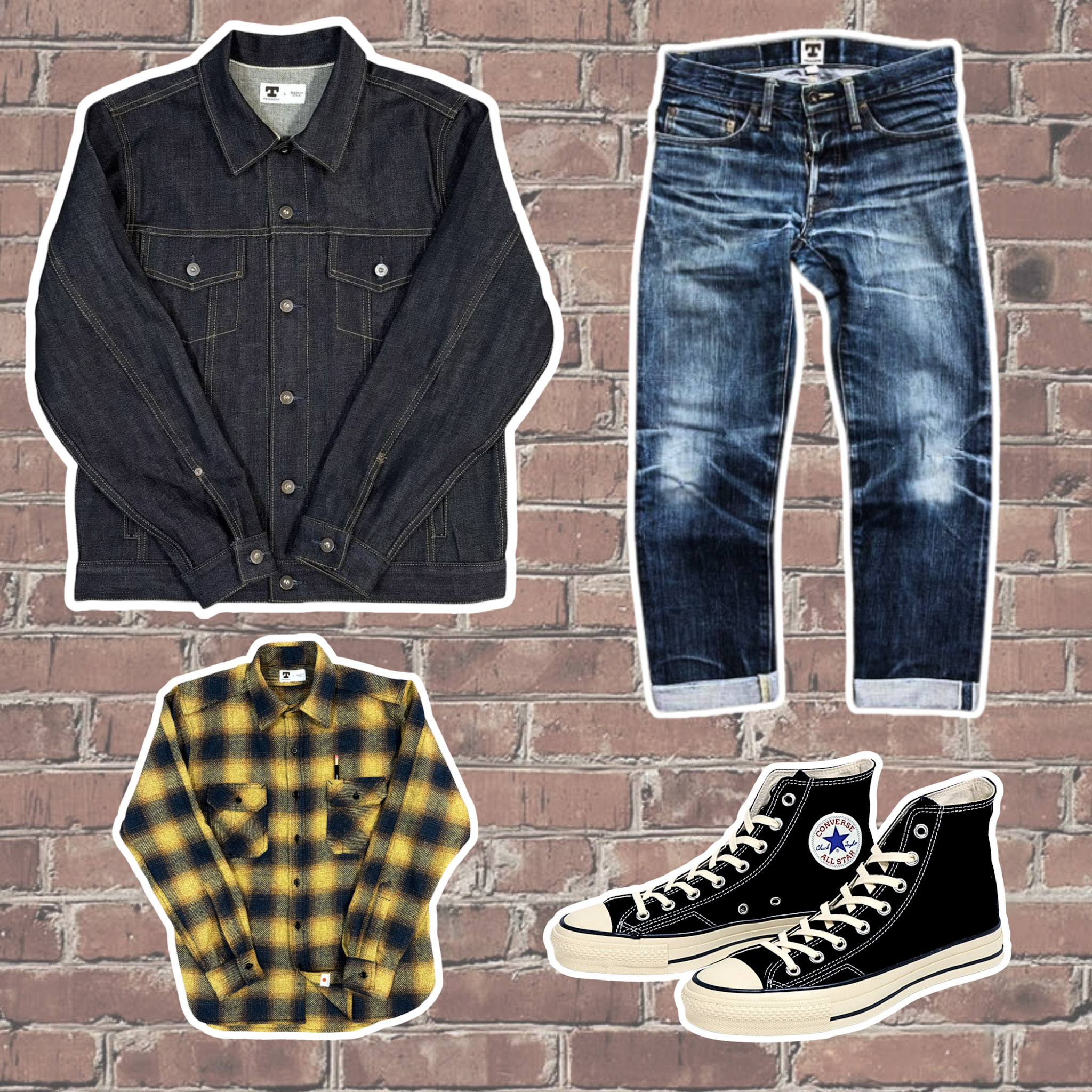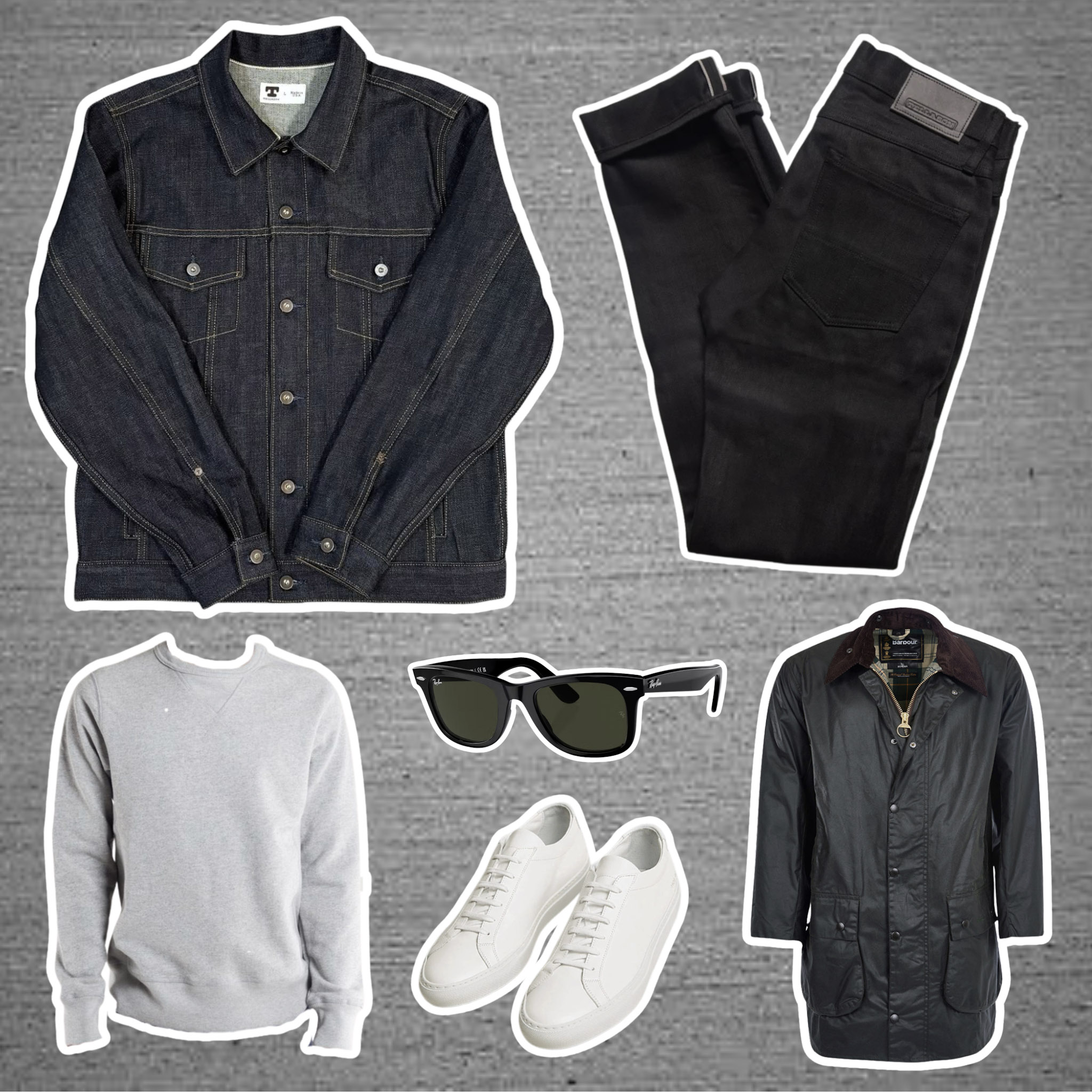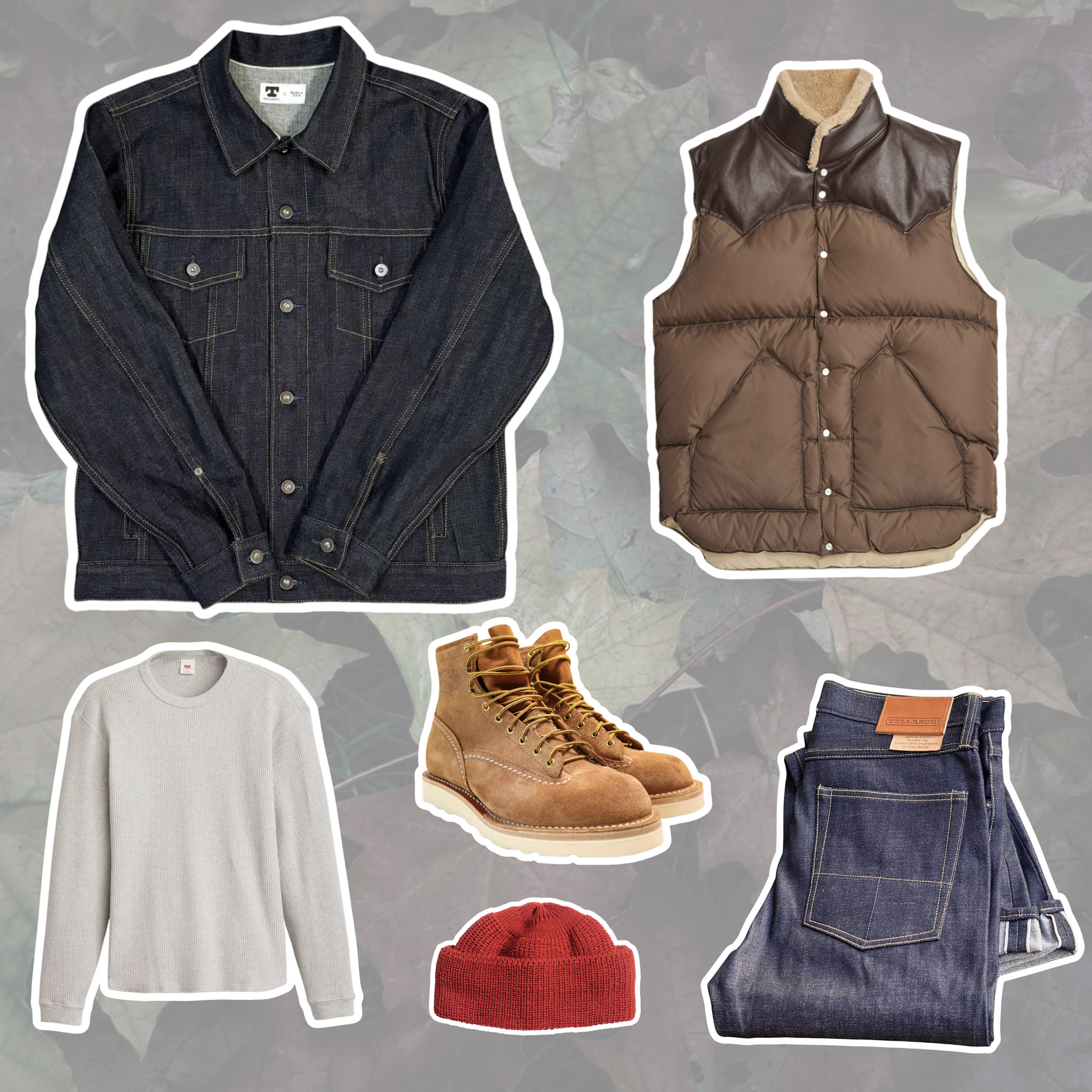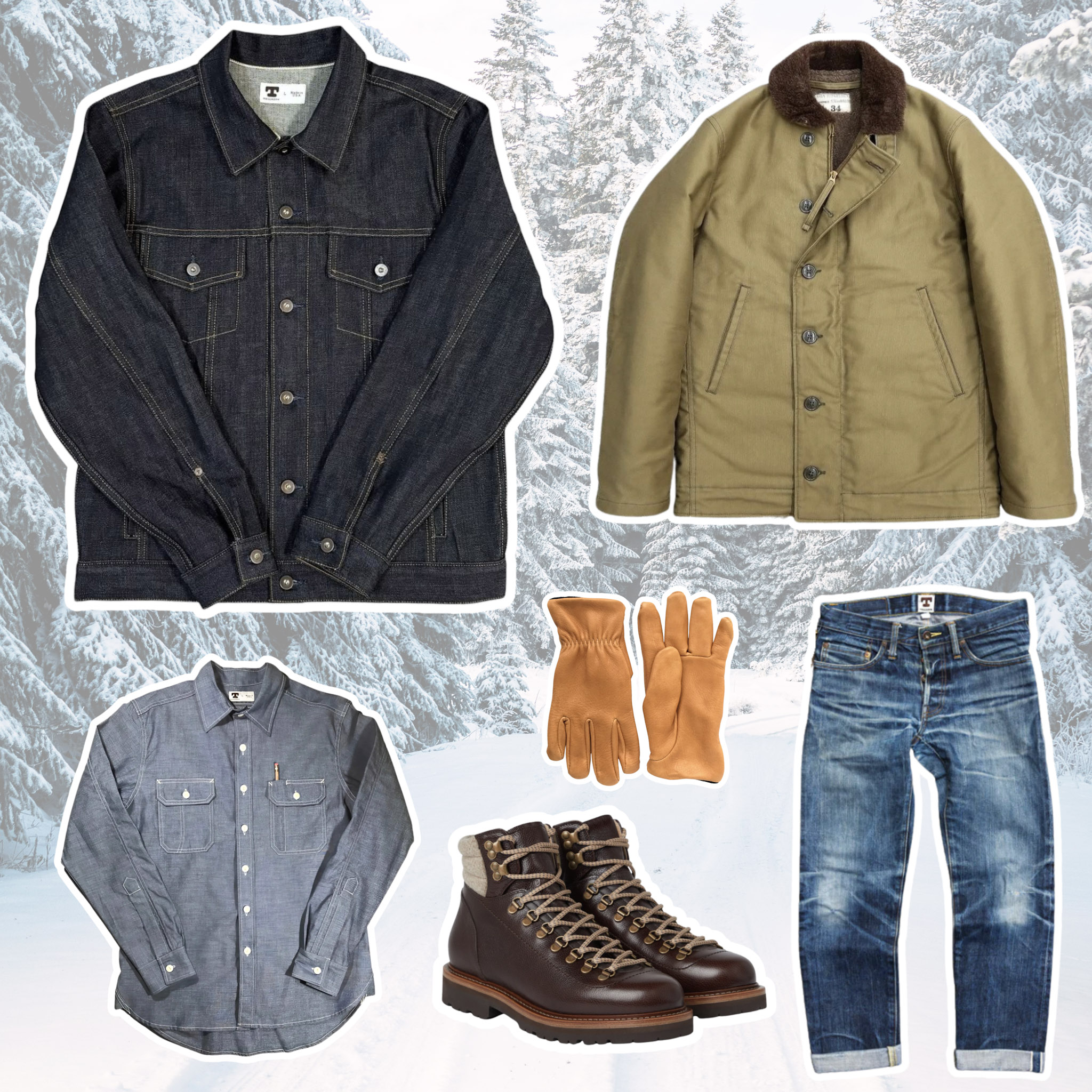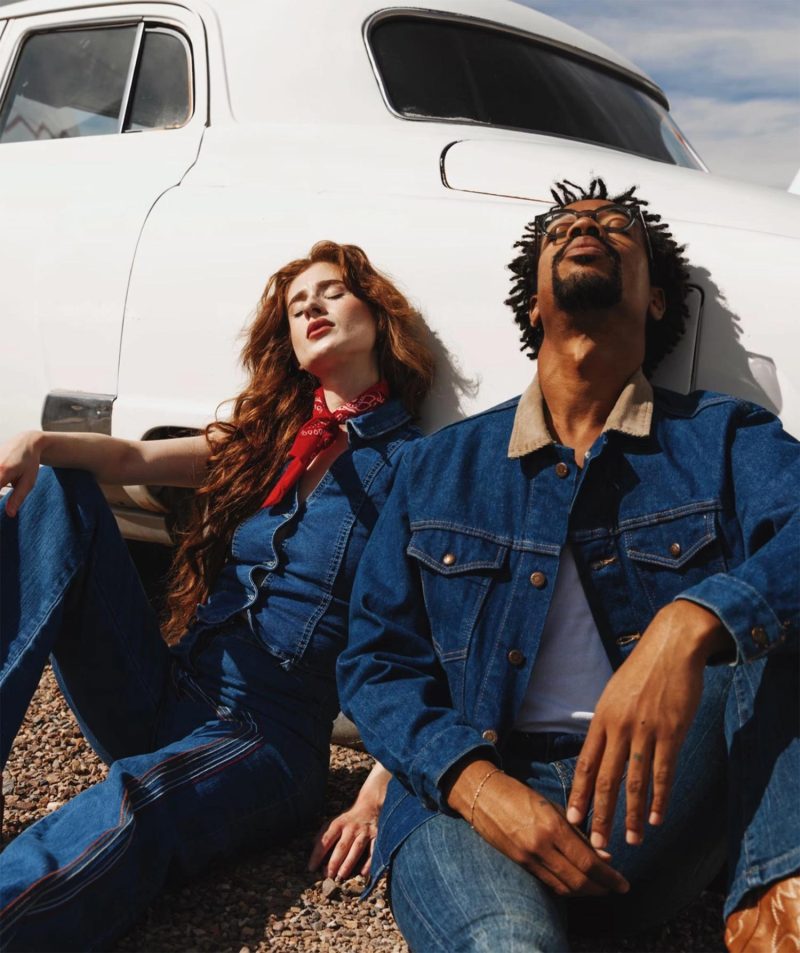… And Why It Took 10 Years to Make These Jeans
Let me (re)introduce myself—I’m Matthew Wilson. If you’ve been around since the early days, you might remember me as Matt Wilson (until someone gently suggested I stop naming myself after something people wipe their feet on).
It’s been years since my name appeared on a Denimhunters byline, and revisiting this story—one stitched together from friendship, denim obsession, and persistence—feels like coming home.
These jeans really did take ten years to make. Not because they were sitting in a warehouse, but because they represent more than a decade of ideas, arguments, false starts, and determination. And finally, they’re here.
This is the story of Thomas’s journey to making the jeans he’d been dreaming of: The first Weirloom jeans. (I’ve made a video about them, but scroll on if you prefer to read …)
EDITOR’S NOTE: This is not a paid review. Matt’s opinions of the jeans are entirely his own.
From Denimhunters to Weirloom
Thomas and I go way back. He’s obviously, as you know, the founder of Denimhunters—one of the first online resources for heritage denim and raw jeans.
And long before Weirloom existed, we were building this site together.
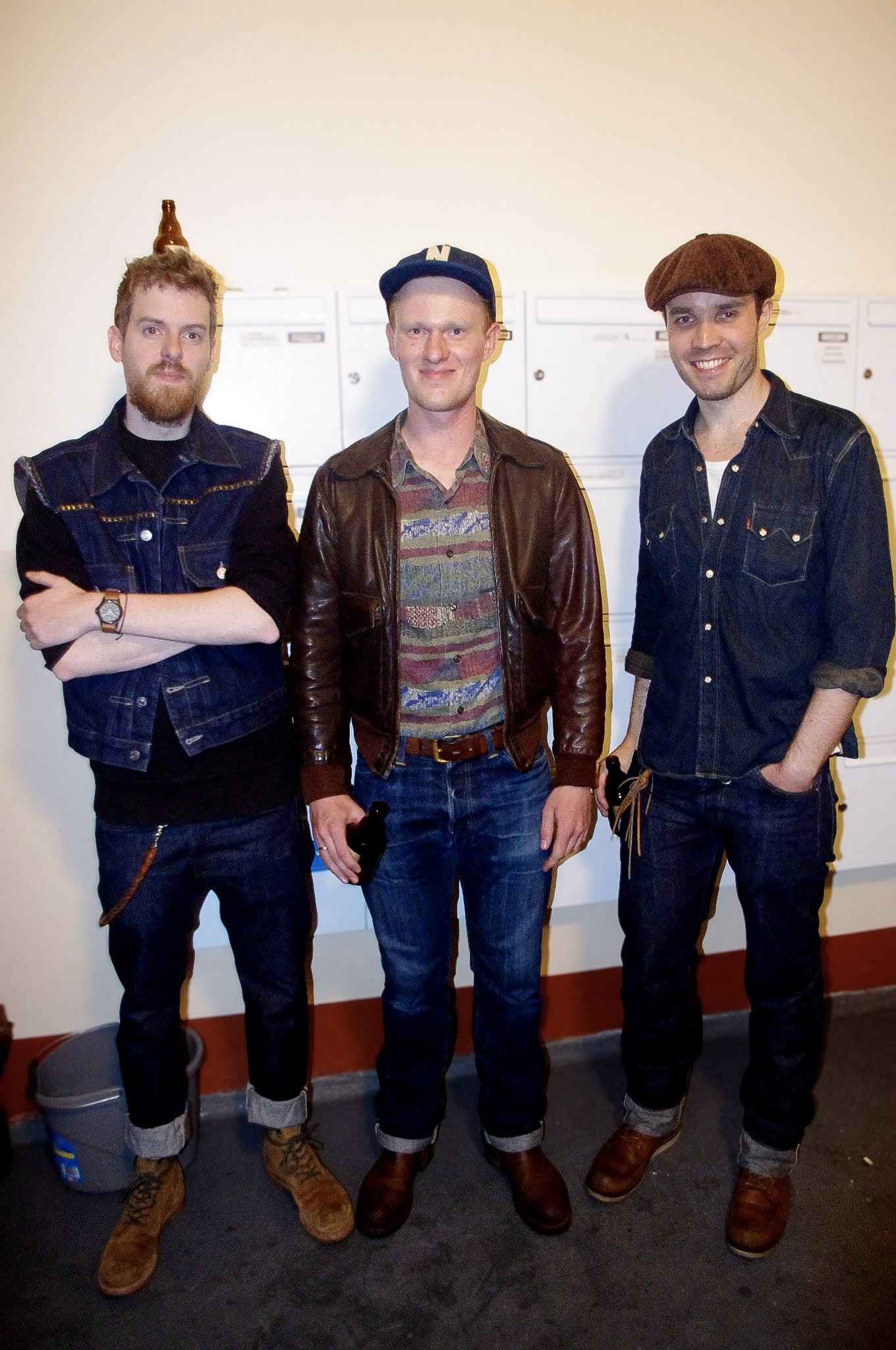
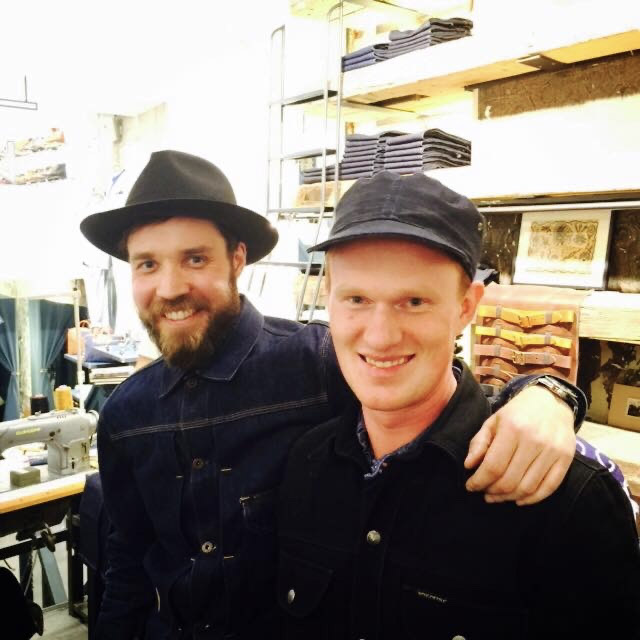
The Early Denim Days
In 2011, I started blogging about denim, convinced I had something to say. No one cared—except Thomas.
I’d sent him an interview I’d done with the Eat Dust guys (who were just starting out then, already making waves), and he published it. That kicked off our friendship and years of collaboration.
Trying to Make Our Own Jeans
A few years later, Denimhunters evolved from a one-man project into something that actually looked like a proper platform. We even had a small webshop for a while, and we were full of enthusiasm.
Naturally, we thought: why not make our own pair of jeans?
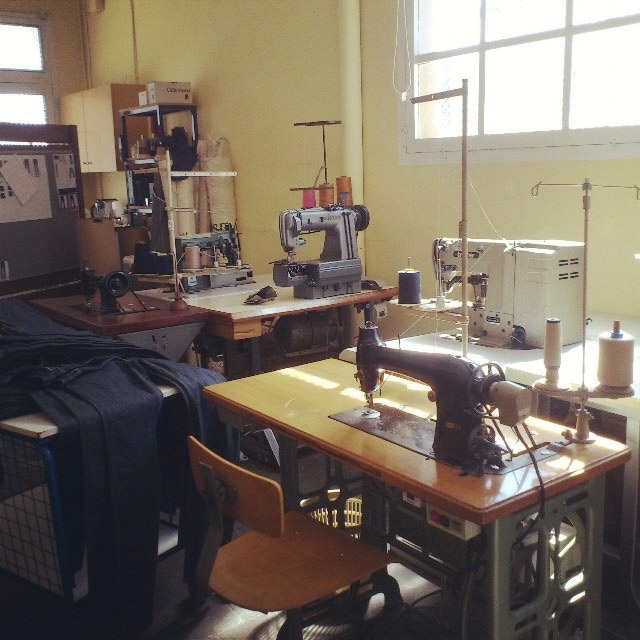

But while we even had Iu from Companion Denim ready to produce them, the problem was we couldn’t agree on a single detail. I was into slim fits; Thomas was an Indigofera Clint fanboy—straight, mid-rise, classic.
The dream collapsed under too many opinions and too little time. But it planted a seed.
How (Not) to Start a Denim Brand
We learned a few lessons the hard way:
- Don’t have a job. Jobs take up all the time you need to build a brand.
- Don’t be dating a bipolar fashion model. Trust me on that one.
- Don’t have kids. They bring you joy, but they leave you with no time.
- Don’t drink too much trying to cope with all of the above.
- And most importantly: don’t let your ego get in the way.
What does help? Patience. Because patience—and a decade of persistence—is exactly how Weirloom finally came to life.
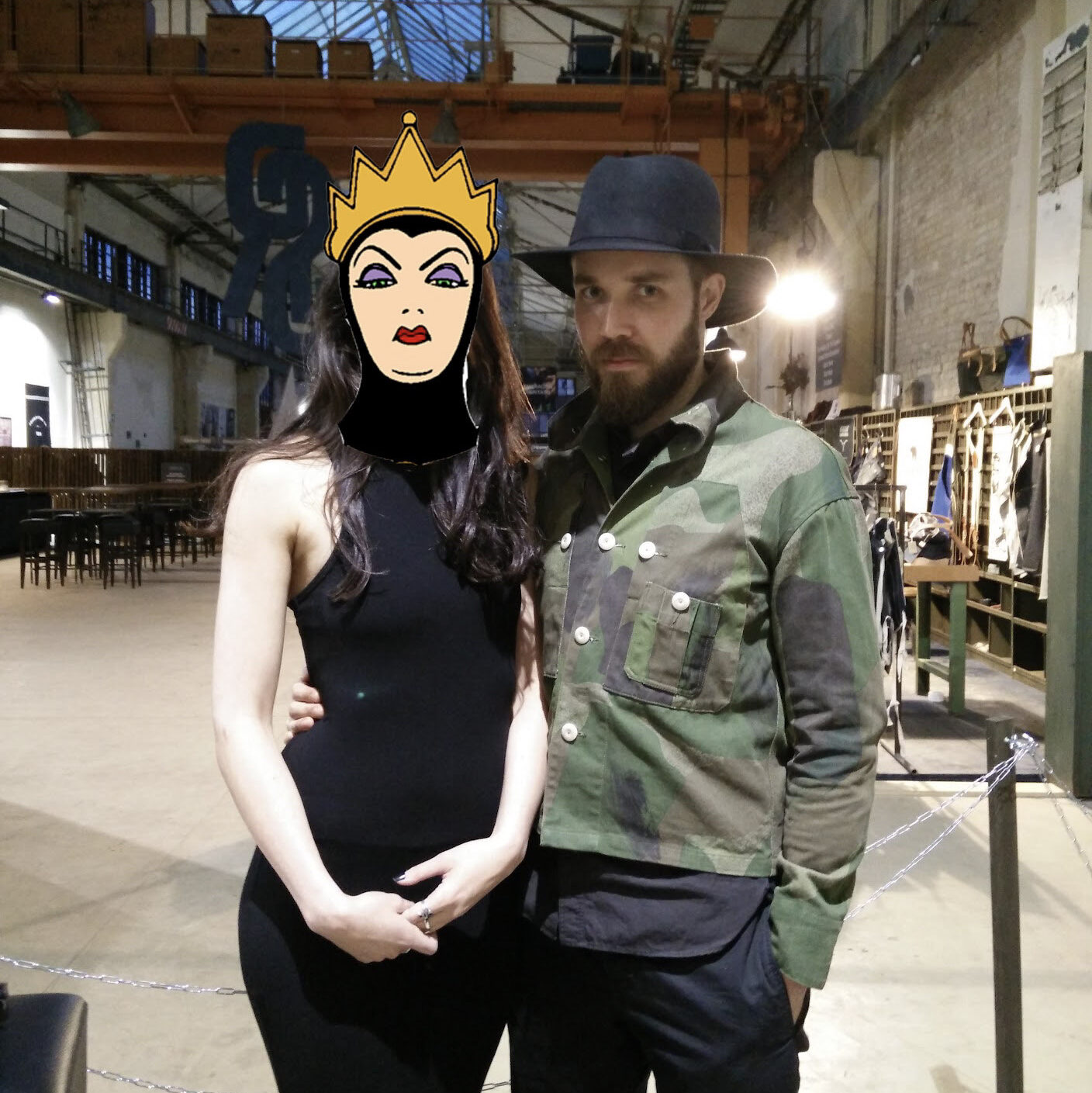
From Idea to Reality
What’s truly beautiful about these jeans is how many threads (pun totally intended) are woven into their story.
Years after our failed attempt, Thomas began developing his own concept. He built relationships with mills, factories, and pattern makers—particularly Candiani Denim, the legendary Italian mill.

Naming the Brand
In 2023, at a trade show in Berlin, Thomas first told me about his idea for Weirloom. My first thought was: that’s a terrible name.
I thought he’d just misspelled “wear,” as in jeans you wear. But after he explained it—that it was a play on “heirloom” (something passed down and treasured)—I started to see it differently.
It’s what happens when a non-native speaker names a brand: slightly kitsch, kind of charming. But it fits perfectly (like the jeans).
My Weirloom Jeans Review
Unless you’re a true denimhead (and if you’ve made it this far, you probably are), you might not care about the rest.
So if you’re just here for a good pair of jeans, I’ll tell you straight: the denim is great, the fit is fantastic. It’s a modern take on a mid-rise straight leg that nails the balance between structure and comfort.
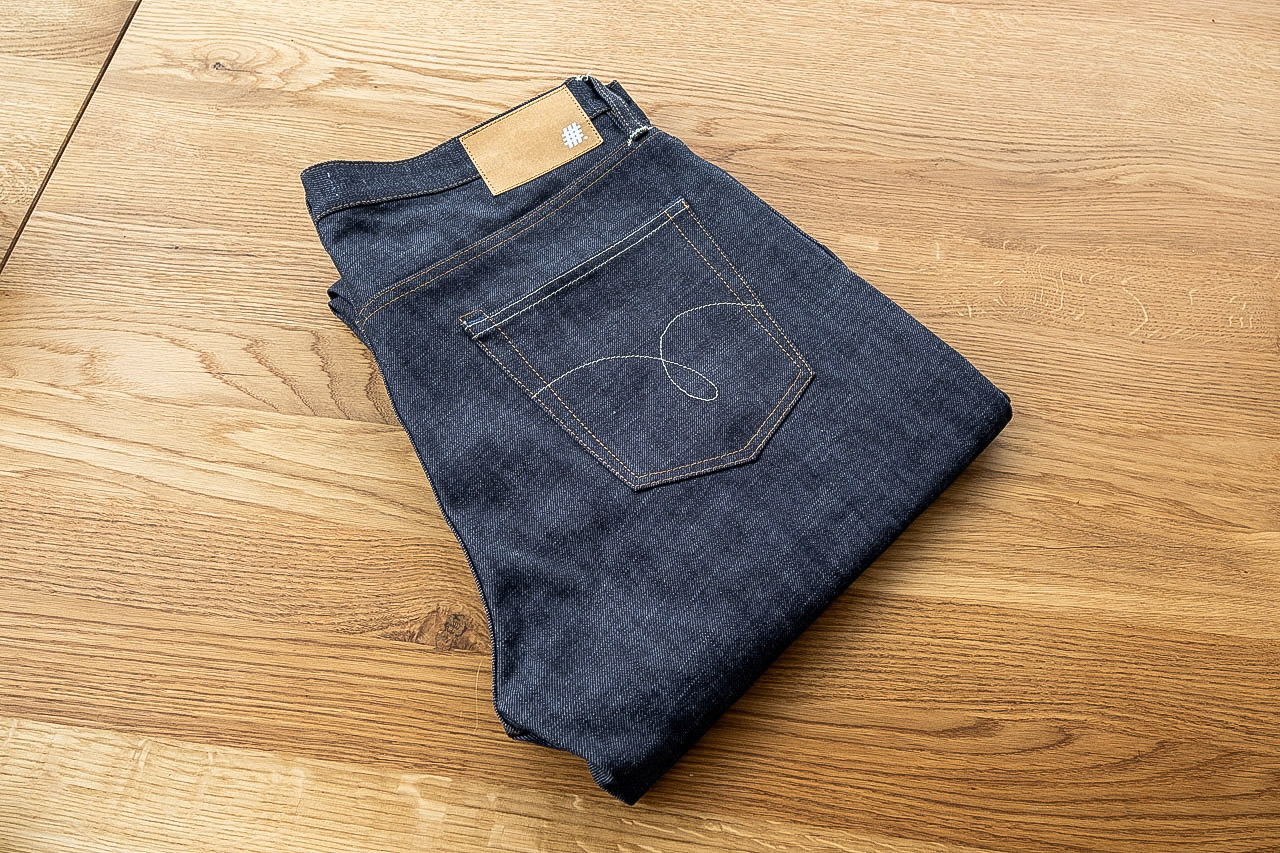
Fit, Fabric and Construction
Fit: Regular Straight
The Weirloom fit is classic yet modern—a mid-rise straight leg with subtle refinements. You can see Thomas’s influences from Indigofera Clint and Iron Heart 634, but this pair feels more versatile and wearable day-to-day.
It’s the kind of jean you can live in: honest, balanced, and completely gimmick-free.

Fabric: Candiani’s Italian Mastery
The 14.25 oz. Candiani raw indigo selvedge denim is exceptional—clean, crisp, refined. If denim were wine, this would be a Soave: elegant, structured, precise.
American denim brings rugged durability. Japanese denim brings wabi-sabi soul. Italian denim perfects the equation—balancing art and precision into something timeless.
This fabric doesn’t shout. It’s quietly confident—flawless and perfectly balanced. The ideal canvas for fading and personal wear stories.
Design and Construction
Pockets
Simple, functional, and well-executed. I finally won an argument—no lined back pockets (they wear out faster anyway).

Rivets and Arcs
No hidden rivets—smart choice. And the back-pocket arcs? A subtle nod to a certain litigious American brand without crossing any legal lines. Clever, tasteful, authentic.

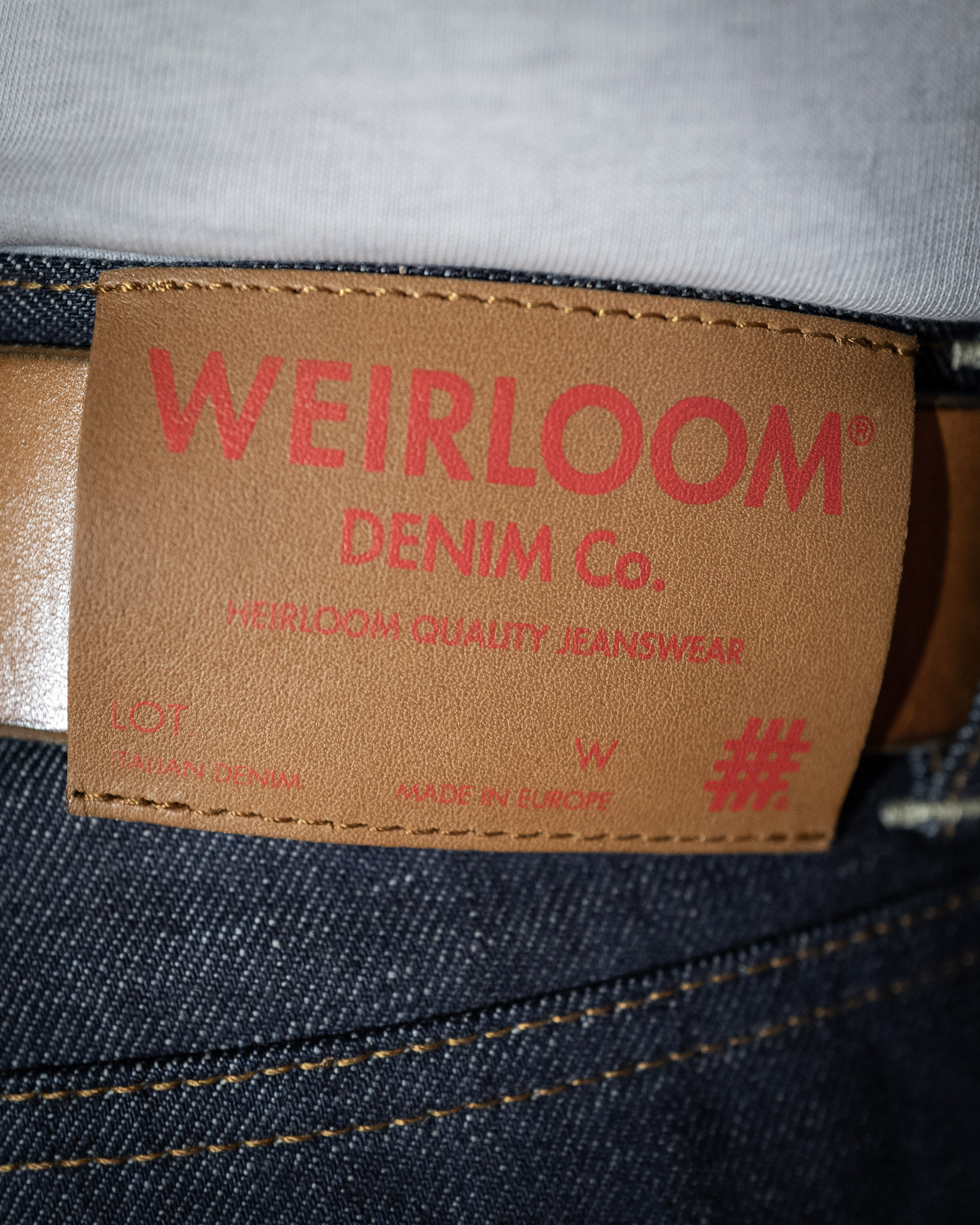
Patch and Belt Loops
The jacron patch might divide opinions, but I love it. It echoes my favourite denim era—when quality and culture collided. Jacron ages beautifully, flaking and cracking to reveal darker tones beneath. The WL#1 swaps the jacron for leather.
Belt loops are solid and tucked under the waistband—built to last.
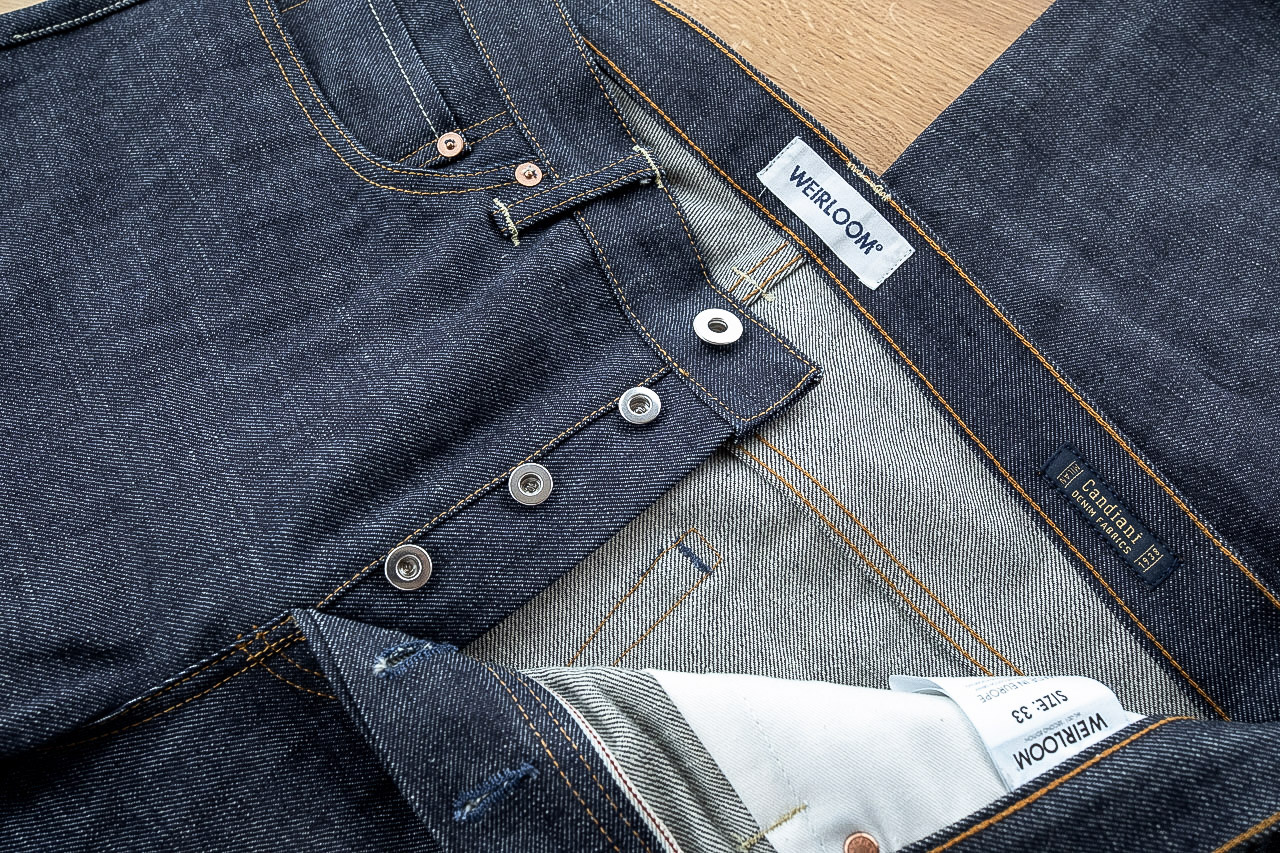
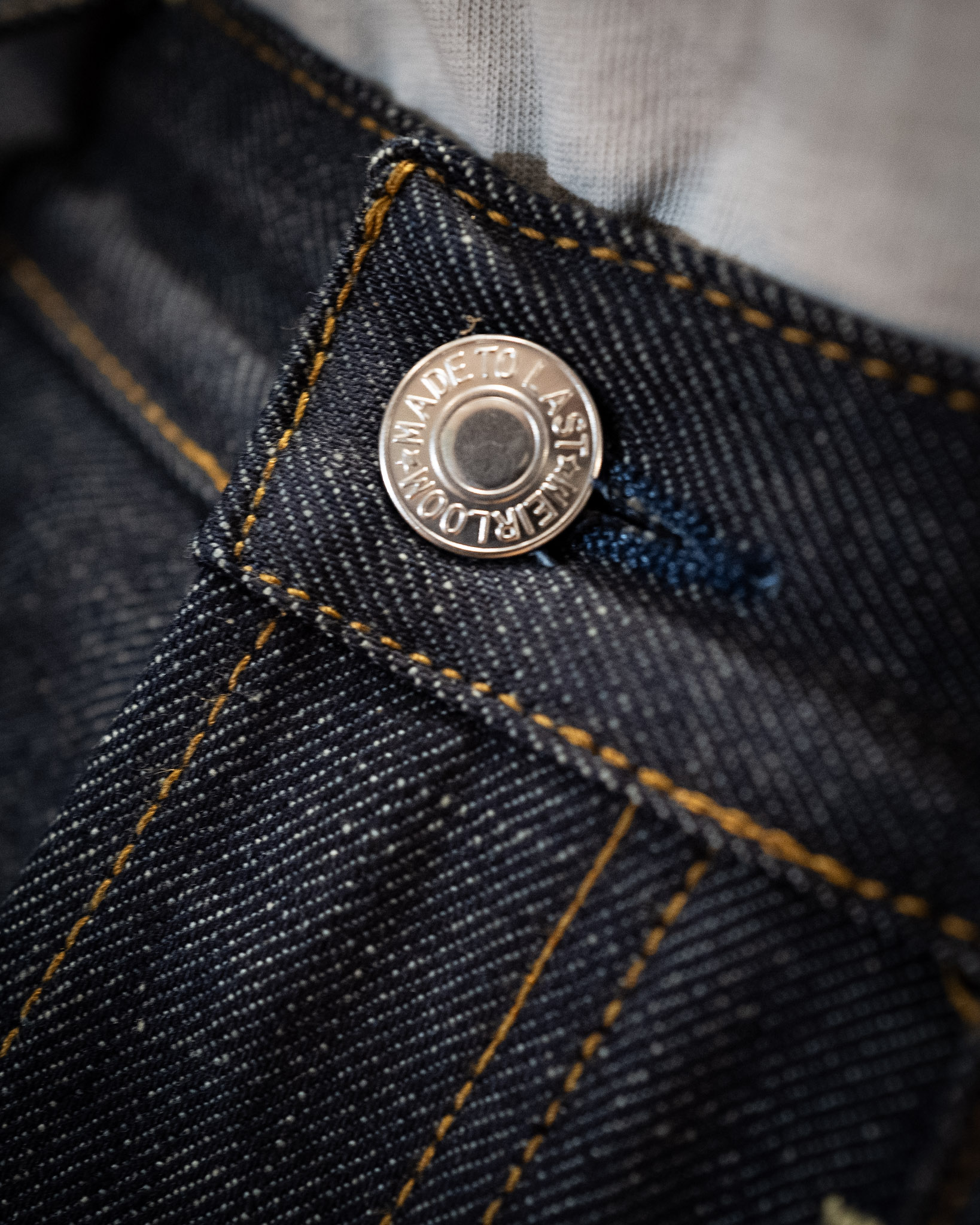
Coin Pocket and Hardware
The first two batches have unbranded copper rivets and donut buttons—simple and strong.
The new third production, called the WL#1, features the first Weirloom-branded hardware.
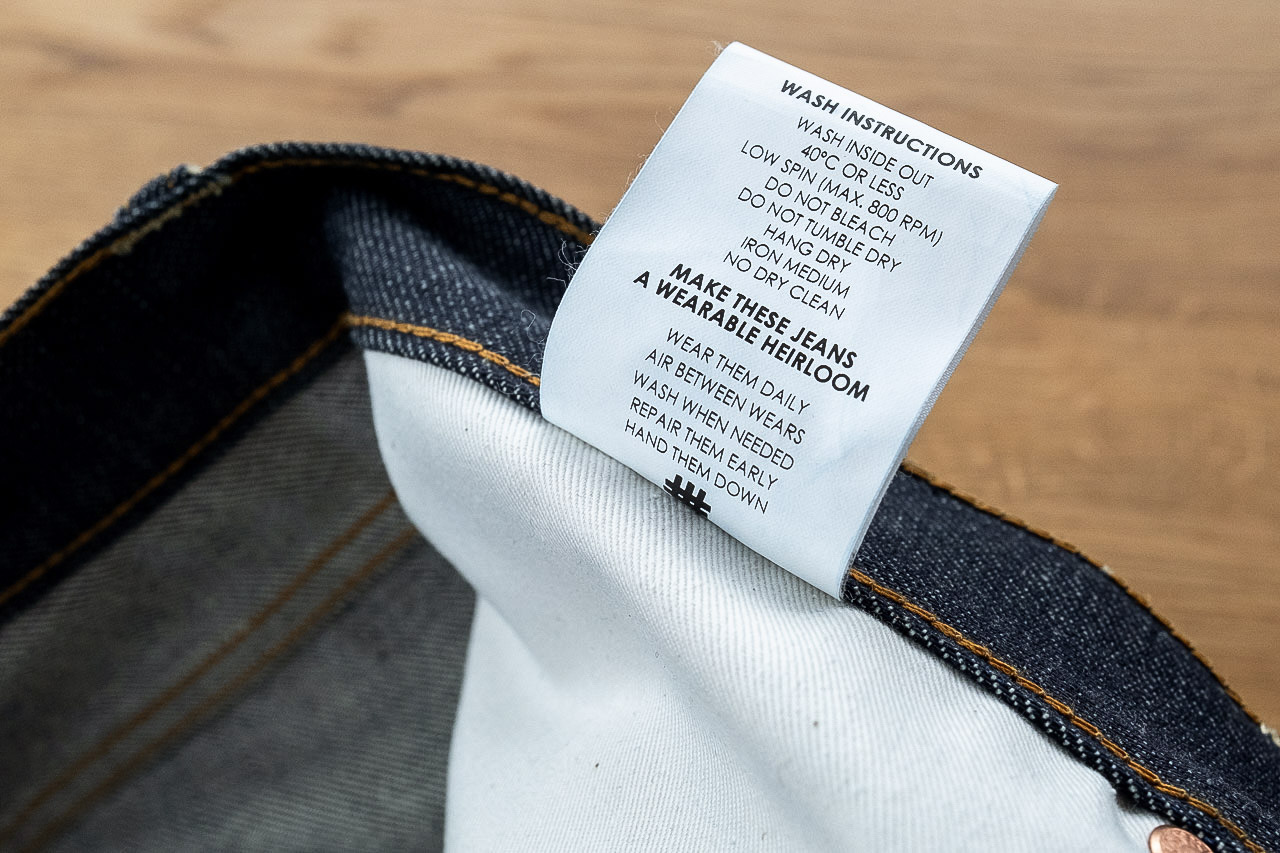
Branding and Care Label
Minimal branding—just a Weirloom label and a Candiani tag. But the care label steals the show:
“Wear daily. Air between wears. Wash when needed. Repair early. Hand them down.”
I’d say: wear them to death and enjoy every minute.
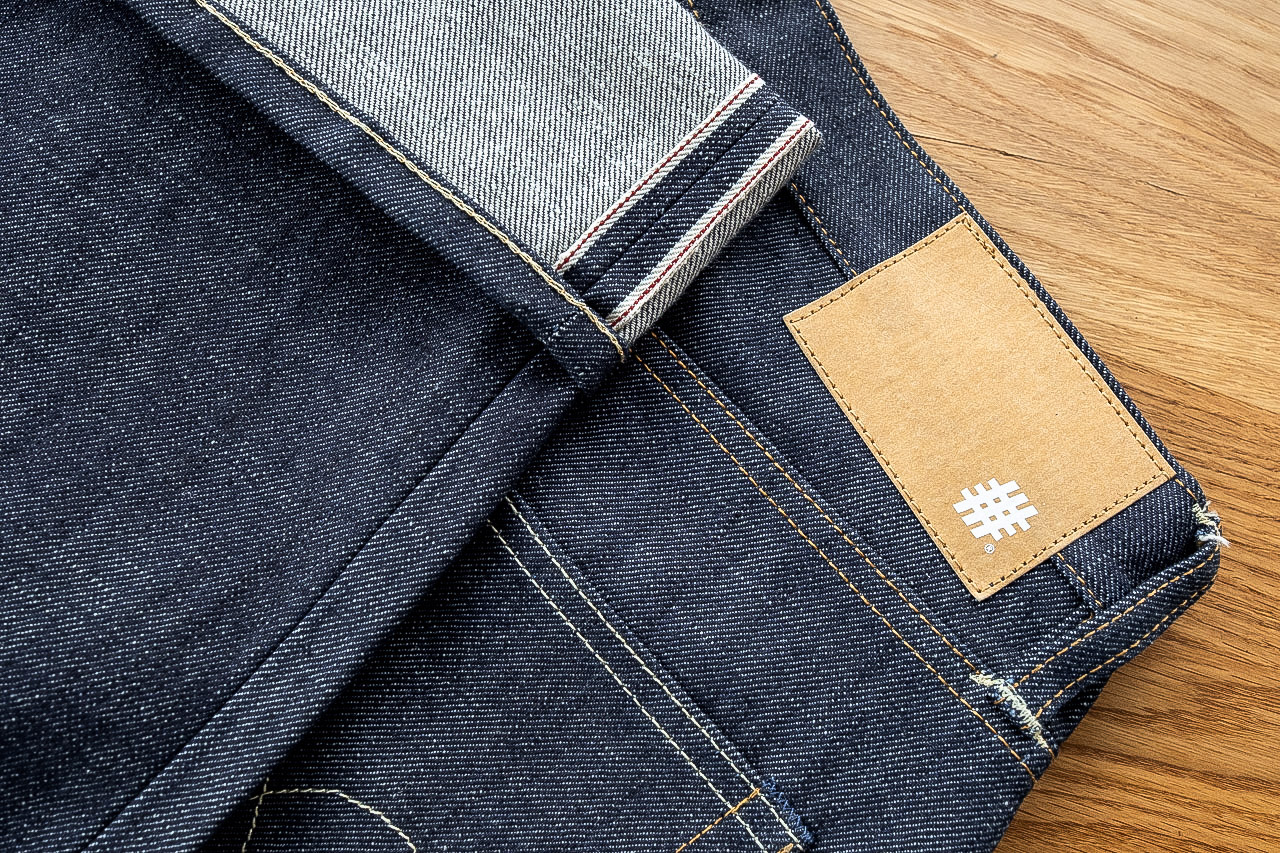
Inside Construction and Hem
Pocket bags are made from heavy twill printed with Denimhunters history—a meaningful nod. Chain-stitched hems and selvedge-lined button fly prove the craftsmanship.
Clean. Purposeful. Built for decades of wear.
A Decade of Denim and Dedication
These jeans represent something rare: patience, dedication, and that dogged determination Thomas has always had. Starting a brand is no small thing—it takes vision and endurance. To me, they also represent a friendship made tangible.
They’re a product shaped by years of experience in the denim world. For me, wearing them feels like coming full circle—from those chaotic early Denimhunters days to now.
Weirloom isn’t just another raw denim release. It’s the story of how a friendship, an idea, and a little too much stubbornness became something real.
Join 11,000+ Denimheads Who Get My Emails
You’ve finished this article—hope you learned something new. How about more like it, delivered to your inbox every Friday?
Hey, it’s Thomas here, founder of Denimhunters. I send weekly emails with buying tips, denim knowledge, and practical style advice for guys who care about what they wear.
The post What a Decade of Denim Obssession Looks Like appeared first on Denimhunters.
DENIM and PATCHES sourced this post originally published on this site


